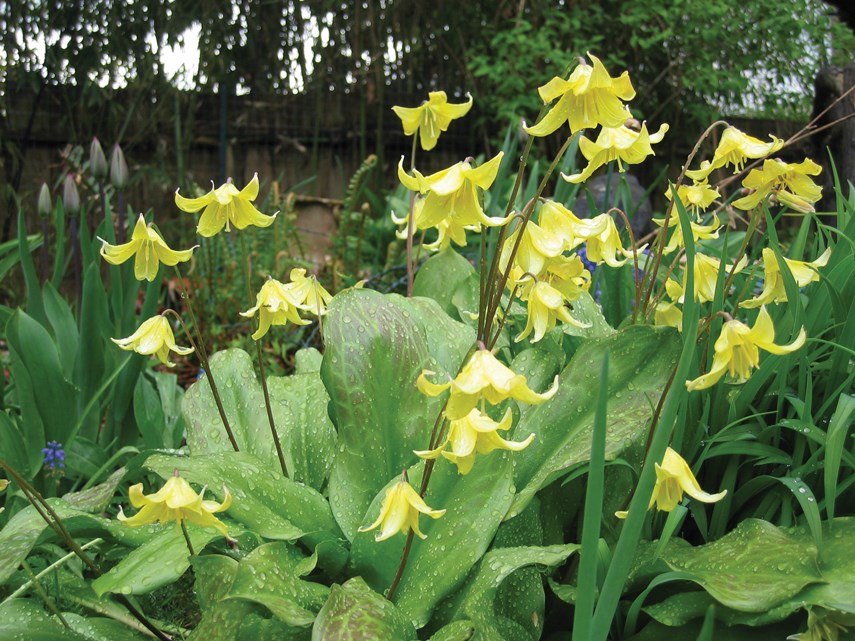I’ve been thinking it’s about time to break out of my native plant series, but there are so many beautiful native plants coming into their full beauty, I’m unable to stop!
Some of my favourite are Erythronium lilies. There are a few different ones native to our area, Erythronium grandiflorum, with unmottled leaves and yellow flowers, E. revolutum, which have flat mottled leaves and a pink flower, and E. oregonum with mottled leaves and a white flower. Commonly they are called glacier lily, avalanche lily, fawn lily and dog-tooth violet.
I have E. grandiflorum. These lilies are an important forage for grizzly bears who dig the corms in spring, ground squirrels also feed on the corms, and the foliage is grazed by sheep, cattle and mule deer. They need a rich, well-drained soil, with leaves left for mulch. Mine have spread slowly over the 15 or so years I have had them. I have tried unsuccessfully to start them from the seeds I collected from my plants.
I have spotted the pink E. revolutum in a nearby park; it’s common in moist, coastal forests, and will need a rich soil with leaves left as a mulch to protect the bulbs from heat and drought. The E. oregonum are common in the Garry oak ecosystem of southern Vancouver Island which includes Garry oak, Oregon ash, snowberry, sword fern, cammas lily, and native grasses, Alaska oniongrass, Blue wildrye, Long-stoloned sedge and Pacific sanicle.
It is sometimes fun to recreate specific native ecosystems if you have a garden suitable to their ideal conditions. Erythronium lilies could also share space with native bleeding heart, Aquilegia formosa, deer fern, wild garlic, hooker’s onion, nodding onion and native sedums (stonecrop); the larger hybrids will overrun these delicate, slow growing plants.
There is lots of good information about restoring and creating native habitats and where to buy native plants at The Garry Oak ecosystem recovery team website, at goert.ca/gardeners_restoration/buying_native_plants.php.
E-Flora BC (innet.geog.ubc.ca) is also a great resource to identify native plants.
Digging lilies (and other plants) from the wild, aside from being illegal, will be unsuccessful due to the deep placement of the bulb, so please never attempt to disturb wild ecosystems. Remember to check out the spring plant sale at Park & Tilford Gardens this Saturday, April 27.
It goes from 10 a.m. to 1 p.m., rain or shine, and is cash-only. Master gardeners, Wild Birds Unlimited, a beekeeper and an herbalist will be on hand to answer questions.
Heather Schamehorn is a certified residential landscape designer, educator, sustainability advocate and acupressure therapist. Contact via perennialpleasures.ca or northshoreacupressure.ca



